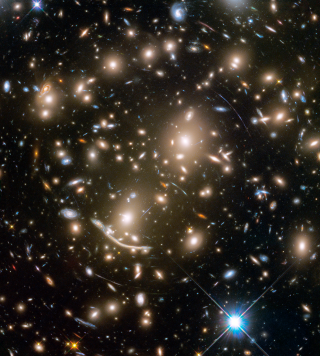Bibcode
Buttitta, C.; Corsini, E. M.; Cuomo, V.; Aguerri, J. A. L.; Coccato, L.; Costantin, L.; Dalla Bontà, E.; Debattista, V. P.; Iodice, E.; Méndez-Abreu, J.; Morelli, L.; Pizzella, A.
Referencia bibliográfica
Astronomy and Astrophysics
Fecha de publicación:
8
2022
Revista
Número de citas
14
Número de citas referidas
13
Descripción
Aims: We characterised the properties of the bar hosted in lenticular galaxy NGC 4277, which is located behind the Virgo cluster.
Methods: We measured the bar length and strength from the surface photometry obtained from the broad-band imaging of the Sloan Digital Sky Survey and we derived the bar pattern speed from the stellar kinematics obtained from the integral-field spectroscopy performed with the Multi Unit Spectroscopic Explorer at the Very Large Telescope. We also estimated the co-rotation radius from the circular velocity, which we constrained by correcting the stellar streaming motions for asymmetric drift, and we finally derived the bar rotation rate.
Results: We found that NGC 4277 hosts a short (Rbar = 3.2−0.6+0.9 kpc), weak (Sbar = 0.21 ± 0.02), and slow (ℛ = 1.8−0.3+0.5) bar and its pattern speed (Ωbar = 24.7 ± 3.4 km s−1 kpc−1) is amongst the best-constrained ones ever obtained with the Tremaine-Weinberg (TW) method with relative statistical errors of ∼0.2.
Conclusions: NGC 4277 is the first clear-cut case of a galaxy hosting a slow stellar bar (ℛ > 1.4 at more than a 1σ confidence level) measured with the model-independent TW method. A possible interaction with the neighbour galaxy NGC 4273 could have triggered the formation of such a slow bar and/or the bar could be slowed down due to the dynamical friction with a significant amount of dark matter within the bar region.
Based on observations made with ESO telescopes at the La Silla-Paranal Observatory under programme 094.B-0241.
Proyectos relacionados

Evolución de Galaxias en Cúmulos
Las estructuras en el Universo, a todas las escalas de masa, se han formado de una forma jerárquica y principalmente producidas por fusiones de galaxias. Sin embargo, esta formación jerárquica de las galaxias está modulada por el entorno en el cual se crean y evolucionan. Mientras que las galaxias de campo presentan una evolución pasiva, los
Jairo
Méndez Abreu